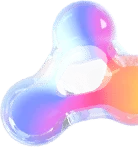Transfer learning is a powerful technique in machine learning that leverages knowledge gained from one task to improve performance on another related task. Instead of training a model from scratch for every new task, transfer learning allows us to use pre-trained models that have already learned useful features from a large dataset. By fine-tuning these models on a smaller, task-specific dataset, we can achieve better results with less data and computational resources.
Transfer learning is particularly effective when the pre-trained model has been trained on a large and diverse dataset, as it can capture general patterns and features that are applicable to a wide range of tasks. It enables the model to learn quickly and effectively, especially in scenarios where the target dataset is limited.
This technique has revolutionized various domains of machine learning, including computer vision, natural language processing, and speech recognition. It has accelerated progress in areas such as image classification, object detection, sentiment analysis, and machine translation.
Transfer learning empowers ML practitioners to build more accurate and efficient models, leading to advancements in AI applications across multiple domains.
Pre-trained models have already learned useful features and patterns from the initial task, making them a valuable starting point. In transfer learning, the earlier layers of the pre-trained model, known as the feature extractor, are preserved, while the later layers, responsible for task-specific predictions, are modified or replaced.
The new task-specific dataset is used to fine-tune the model, allowing it to adapt its weights and parameters to the specific nuances of the new task. By training on this smaller dataset, the model can generalize and learn task-specific patterns more effectively, even with limited data.
Transfer learning saves significant computational resources and training time, as it bypasses the need to train a model from scratch. It also addresses the problem of data scarcity by utilizing knowledge from the original task, improving performance and reducing the risk of transfer learning overfitting.
Transfer learning and pre-trained models are two related concepts in machine learning, but they differ in their approaches and applications.
Pre-trained models refer to models that have been trained on large datasets for a specific task. These models have learned features and patterns that are generally applicable to that task. They serve as a starting point for new tasks, but their weights and parameters are not updated during the training process. Pre-trained models are useful when the new task is similar to the original task.
On the other hand, transfer learning involves taking a pre-trained model and fine-tuning it on a new task-specific dataset. The earlier layers of the model, known as the feature extractor, are usually retained, while the later layers are modified or replaced to suit the new task. Transfer learning is effective when the new task has limited data or shares similarities with the original task.
Transfer learning has gained immense popularity in the field of machine learning due to its many advantages and practical applications. There are several reasons why transfer learning is widely used:
Transfer learning is widely used for image segmentation tasks to improve the performance and efficiency of models. Image segmentation involves dividing an image into meaningful regions or segments to identify and classify different objects or regions within the image.
In transfer learning for image segmentation, a pre-trained model, often a convolutional neural network (CNN), is used as a starting point. The pre-trained model is typically trained on a large-scale image dataset, such as ImageNet, to learn general image features.
To adapt the pre-trained model for image segmentation, the fully connected layers are replaced with new layers specific to the segmentation task. The pre-trained model’s convolutional layers, acting as a feature extractor, are retained and fine-tuned using a smaller dataset with labeled segmented images. The fine-tuning process adjusts the weights and parameters of the model to extract and classify relevant features specific to the segmentation task.
By utilizing transfer learning for image segmentation, the model can benefit from the pre-trained model’s ability to capture low-level image features, such as edges and textures, while focusing on learning task-specific high-level features. This approach improves the model’s segmentation accuracy and reduces the need for a large labeled dataset, making it particularly valuable in scenarios with limited annotated segmentation data.
Transfer learning offers various approaches to leverage knowledge from pre-trained models and apply it to new tasks. Here are some common approaches:
These approaches provide flexibility in how knowledge is transferred from pre-trained models, allowing researchers and practitioners to choose the most suitable method based on the specific requirements and characteristics of their tasks.

